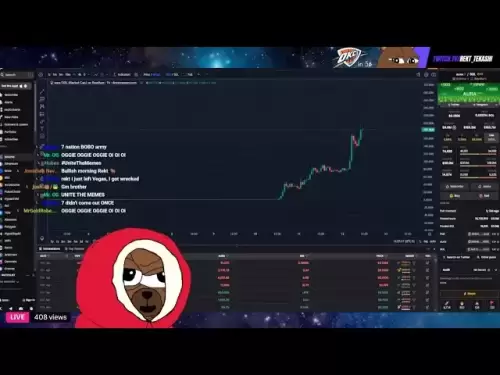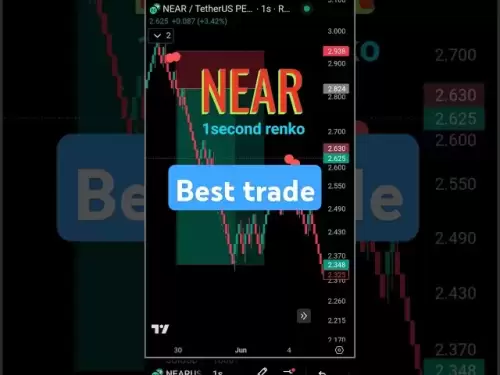-
 Bitcoin
Bitcoin $105,958.7463
-1.46% -
 Ethereum
Ethereum $2,573.9608
-5.95% -
 Tether USDt
Tether USDt $1.0005
0.05% -
 XRP
XRP $2.1553
-3.88% -
 BNB
BNB $654.7084
-1.22% -
 Solana
Solana $147.8876
-6.45% -
 USDC
USDC $0.9998
-0.01% -
 Dogecoin
Dogecoin $0.1792
-4.47% -
 TRON
TRON $0.2693
-1.95% -
 Cardano
Cardano $0.6427
-5.75% -
 Hyperliquid
Hyperliquid $41.8216
-2.22% -
 Sui
Sui $3.0698
-7.70% -
 Chainlink
Chainlink $13.5208
-6.00% -
 Bitcoin Cash
Bitcoin Cash $425.5404
-2.40% -
 UNUS SED LEO
UNUS SED LEO $9.0529
2.14% -
 Avalanche
Avalanche $19.5263
-7.32% -
 Stellar
Stellar $0.2612
-4.76% -
 Toncoin
Toncoin $3.0128
-5.29% -
 Shiba Inu
Shiba Inu $0.0...01204
-4.49% -
 Hedera
Hedera $0.1570
-6.93% -
 Litecoin
Litecoin $84.8024
-4.37% -
 Polkadot
Polkadot $3.8487
-5.06% -
 Ethena USDe
Ethena USDe $1.0004
0.00% -
 Monero
Monero $310.7189
-4.21% -
 Dai
Dai $0.9999
0.00% -
 Bitget Token
Bitget Token $4.5194
-4.07% -
 Uniswap
Uniswap $7.5602
-3.52% -
 Pepe
Pepe $0.0...01107
-8.20% -
 Aave
Aave $285.5551
-5.09% -
 Pi
Pi $0.5752
-7.61%
What does it mean when TRIX crosses the moving average? What risks does a break below the moving average imply?
The TRIX indicator, useful in crypto trading, signals potential buy or sell opportunities when it crosses its moving average, but traders should use it with other indicators to confirm signals and manage risks.
Jun 10, 2025 at 10:49 am
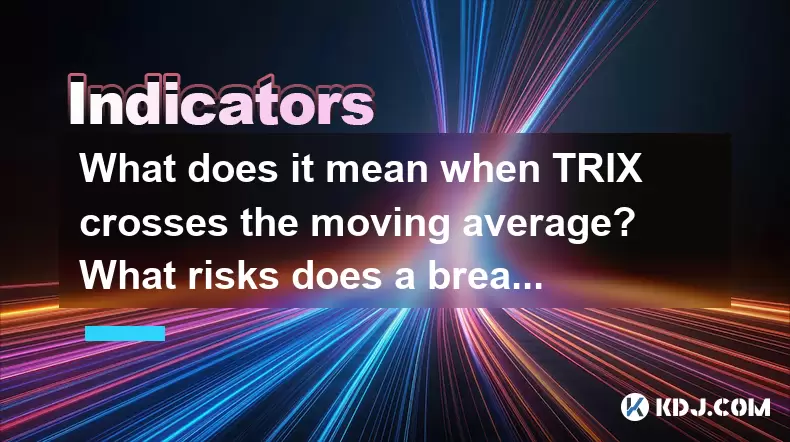
The TRIX (Triple Exponential Average) is a momentum indicator that displays the percentage rate of change of a triple exponentially smoothed moving average of a security's closing price. When the TRIX line crosses its signal line, which is typically a moving average of the TRIX, it can signal potential buy or sell opportunities. Understanding the implications of these crossovers, particularly when the TRIX breaks below the moving average, is crucial for traders and investors in the cryptocurrency market.
Understanding the TRIX Indicator
The TRIX indicator is designed to filter out insignificant price movements and focus on the underlying trend. It is calculated using three exponential moving averages (EMAs) to smooth the price data, reducing the impact of short-term fluctuations. The result is a line that oscillates around zero, with positive values indicating bullish momentum and negative values indicating bearish momentum.
TRIX and Its Moving Average
The signal line for the TRIX is often a simple moving average (SMA) of the TRIX itself. Commonly, a 9-day SMA is used. The interaction between the TRIX line and this signal line can provide insights into potential changes in market momentum.
- A bullish crossover occurs when the TRIX line moves above its signal line. This suggests that the momentum is shifting upwards, and it could be an entry point for a long position.
- A bearish crossover happens when the TRIX line falls below its signal line, indicating a potential shift in momentum downwards, which might be a signal to exit a long position or enter a short position.
What Does a TRIX Crossover Mean?
When the TRIX crosses its moving average, it signifies a change in momentum. A bullish crossover can be interpreted as a sign that the current downtrend may be losing steam, and a new uptrend might be starting. Conversely, a bearish crossover suggests that the current uptrend could be weakening, and a downtrend might be imminent.
Risks Associated with a Break Below the Moving Average
A break below the moving average by the TRIX line can imply several risks that traders should be aware of:
- Potential Reversal of Trend: A break below the moving average can indicate that the bullish momentum is fading, and a bearish trend might be on the horizon. This could lead to a decline in the asset's price.
- Increased Volatility: Such a break can signal increased market volatility, as the shift in momentum might cause rapid price movements.
- False Signals: Like all technical indicators, the TRIX is not foolproof. A break below the moving average might be a false signal, leading to potential losses if traders act on it without further confirmation.
Strategies to Mitigate Risks
To mitigate the risks associated with a break below the moving average, traders can employ several strategies:
- Confirmation with Other Indicators: Using additional technical indicators, such as the Relative Strength Index (RSI) or Moving Average Convergence Divergence (MACD), can help confirm the signal provided by the TRIX.
- Setting Stop-Loss Orders: Implementing stop-loss orders can help limit potential losses if the market moves against the trader's position.
- Position Sizing: Managing the size of the position can reduce the impact of any adverse price movements.
Practical Application of TRIX in Trading
To apply the TRIX in trading, follow these steps:
- Select a Timeframe: Choose a timeframe that aligns with your trading strategy, whether it's short-term or long-term.
- Apply the TRIX Indicator: Add the TRIX indicator to your chart, typically with a 9-day period for the TRIX and a 9-day SMA for the signal line.
- Monitor for Crossovers: Watch for the TRIX line to cross above or below the signal line.
- Confirm with Other Indicators: Use other indicators to confirm the signal from the TRIX.
- Execute Trades: Based on the confirmed signals, enter or exit trades accordingly.
- Set Risk Management Measures: Implement stop-loss orders and manage position sizes to mitigate risks.
Real-World Examples in Cryptocurrency Trading
In the cryptocurrency market, the TRIX indicator can be particularly useful due to the high volatility and rapid price movements. For example, if Bitcoin's TRIX line crosses below its 9-day SMA, it might suggest that the bullish momentum is waning, and a price correction could be on the way. Conversely, a crossover above the SMA could indicate a strengthening of bullish momentum, potentially leading to a price increase.
Limitations of the TRIX Indicator
While the TRIX can be a valuable tool, it is not without its limitations. It can lag behind price movements, meaning that signals might come later than desired. Additionally, it can produce false signals in highly volatile markets, which are common in the cryptocurrency space. Therefore, it is essential to use the TRIX in conjunction with other indicators and market analysis techniques.
Frequently Asked Questions
Q1: Can the TRIX indicator be used for all cryptocurrencies?
A1: Yes, the TRIX indicator can be applied to any cryptocurrency. However, the effectiveness may vary depending on the liquidity and volatility of the specific cryptocurrency. More liquid assets like Bitcoin and Ethereum might provide more reliable signals compared to less liquid altcoins.
Q2: How often should I check the TRIX indicator for signals?
A2: The frequency of checking the TRIX indicator depends on your trading style. For day traders, monitoring the TRIX on shorter timeframes (e.g., 1-hour or 4-hour charts) might be necessary. For swing traders or long-term investors, checking on daily or weekly charts could be more appropriate.
Q3: Is the TRIX indicator more effective in bullish or bearish markets?
A3: The TRIX indicator is designed to identify changes in momentum, so it can be effective in both bullish and bearish markets. However, its signals might be more reliable in trending markets rather than in sideways or choppy market conditions.
Q4: Can the TRIX be used in conjunction with fundamental analysis?
A4: Yes, combining the TRIX with fundamental analysis can enhance decision-making. While the TRIX provides technical insights into momentum and potential trend changes, fundamental analysis can offer a broader view of the cryptocurrency's intrinsic value and market conditions.
Disclaimer:info@kdj.com
The information provided is not trading advice. kdj.com does not assume any responsibility for any investments made based on the information provided in this article. Cryptocurrencies are highly volatile and it is highly recommended that you invest with caution after thorough research!
If you believe that the content used on this website infringes your copyright, please contact us immediately (info@kdj.com) and we will delete it promptly.
- Plasma Labs Raises Its XPL Token Sale Deposit Cap to $1 Billion
- 2025-06-14 00:20:12
- A new report by the World Economic Forum (WEF), titled Asset Tokenization in Financial Markets, directly references a major development involving the XRP Ledger (XRPL)
- 2025-06-14 00:20:12
- Algorand (ALGO) Awaits Confirmation Above $0.209 for Upside
- 2025-06-14 00:15:12
- SEC Chair Backs DeFi and Self-Custody – Promises Clearer Rules for Crypto and Bitcoin
- 2025-06-14 00:15:12
- Bitcoin [BTC] adoption in Kenya has surged, even in informal settlements
- 2025-06-14 00:10:12
- Hyperliquid (HYPE) token price prediction: Will it reach $100?
- 2025-06-14 00:10:12
Related knowledge
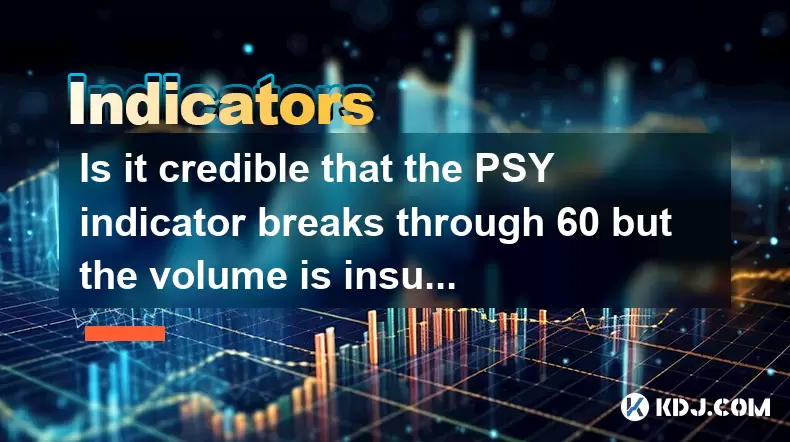
Is it credible that the PSY indicator breaks through 60 but the volume is insufficient?
Jun 14,2025 at 12:14am
Understanding the PSY Indicator in Cryptocurrency TradingThe Psychological Line (PSY) indicator is a momentum oscillator used primarily to measure the sentiment of traders and investors in financial markets, including the cryptocurrency space. It calculates the ratio of days where prices closed higher versus lower over a specified period, typically 12 o...

Will the RSI fall after the top divergence? How to improve the judgment accuracy?
Jun 13,2025 at 11:21pm
Understanding RSI and Top Divergence in Cryptocurrency TradingThe Relative Strength Index (RSI) is a momentum oscillator widely used in cryptocurrency trading to measure the speed and change of price movements. It typically ranges from 0 to 100, with levels above 70 considered overbought and below 30 considered oversold. In crypto markets, where volatil...
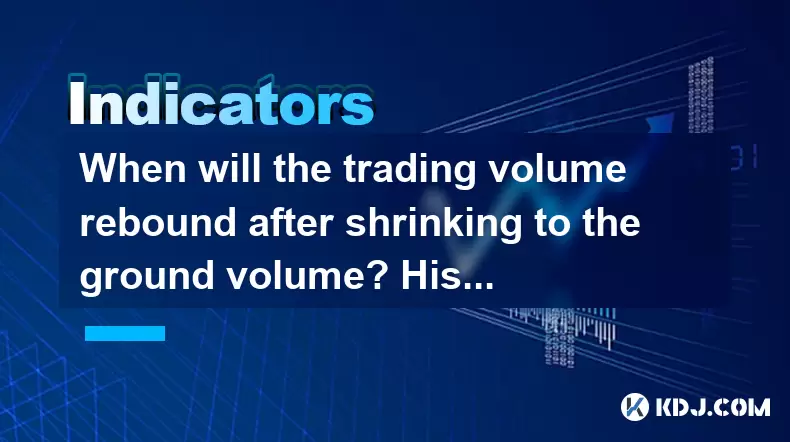
When will the trading volume rebound after shrinking to the ground volume? Historical percentile comparison method
Jun 13,2025 at 03:36pm
Understanding the Ground Volume Concept in Cryptocurrency MarketsIn cryptocurrency trading, 'ground volume' refers to a period when the trading volume of a particular asset or market drops significantly, often reaching multi-month or even multi-year lows. This phenomenon typically signals a lack of interest from traders and investors, suggesting that th...
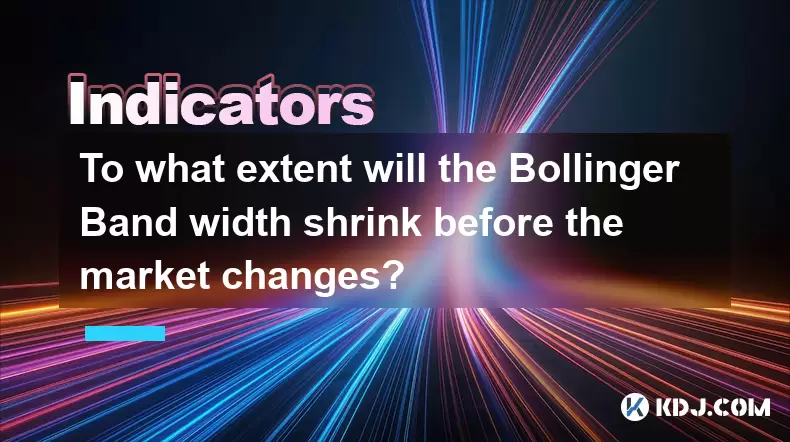
To what extent will the Bollinger Band width shrink before the market changes?
Jun 13,2025 at 06:35pm
Understanding the Bollinger Band Width and Its SignificanceThe Bollinger Band width is a critical technical analysis tool used in cryptocurrency trading to measure market volatility. It consists of three lines: a simple moving average (SMA), an upper band, and a lower band. The distance between the upper and lower bands reflects the level of volatility ...
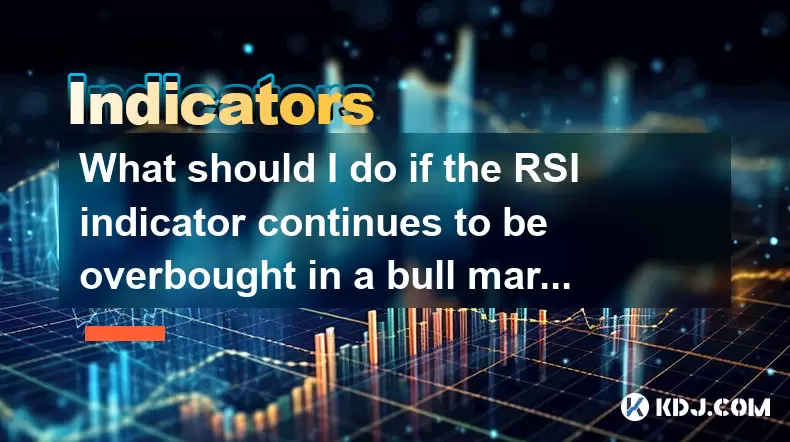
What should I do if the RSI indicator continues to be overbought in a bull market? How to adjust the overbought zone threshold?
Jun 13,2025 at 05:57pm
Understanding the RSI Indicator in a Bull MarketThe Relative Strength Index (RSI) is a momentum oscillator commonly used by traders to assess overbought or oversold conditions of an asset. In a bull market, especially within the cryptocurrency space, prices can remain elevated for extended periods. This often leads to the RSI indicator staying in the ov...

How to read the CR indicator's four lines that diverge and then converge? Key pressure point identification skills
Jun 13,2025 at 12:21pm
Understanding the CR Indicator in Cryptocurrency TradingThe CR indicator, also known as the Chikin Ratio or Chaikin Oscillator, is a technical analysis tool widely used in cryptocurrency trading to gauge momentum and potential price reversals. It combines volume and price data to provide traders with insights into market strength and weakness. The indic...

Is it credible that the PSY indicator breaks through 60 but the volume is insufficient?
Jun 14,2025 at 12:14am
Understanding the PSY Indicator in Cryptocurrency TradingThe Psychological Line (PSY) indicator is a momentum oscillator used primarily to measure the sentiment of traders and investors in financial markets, including the cryptocurrency space. It calculates the ratio of days where prices closed higher versus lower over a specified period, typically 12 o...

Will the RSI fall after the top divergence? How to improve the judgment accuracy?
Jun 13,2025 at 11:21pm
Understanding RSI and Top Divergence in Cryptocurrency TradingThe Relative Strength Index (RSI) is a momentum oscillator widely used in cryptocurrency trading to measure the speed and change of price movements. It typically ranges from 0 to 100, with levels above 70 considered overbought and below 30 considered oversold. In crypto markets, where volatil...

When will the trading volume rebound after shrinking to the ground volume? Historical percentile comparison method
Jun 13,2025 at 03:36pm
Understanding the Ground Volume Concept in Cryptocurrency MarketsIn cryptocurrency trading, 'ground volume' refers to a period when the trading volume of a particular asset or market drops significantly, often reaching multi-month or even multi-year lows. This phenomenon typically signals a lack of interest from traders and investors, suggesting that th...

To what extent will the Bollinger Band width shrink before the market changes?
Jun 13,2025 at 06:35pm
Understanding the Bollinger Band Width and Its SignificanceThe Bollinger Band width is a critical technical analysis tool used in cryptocurrency trading to measure market volatility. It consists of three lines: a simple moving average (SMA), an upper band, and a lower band. The distance between the upper and lower bands reflects the level of volatility ...

What should I do if the RSI indicator continues to be overbought in a bull market? How to adjust the overbought zone threshold?
Jun 13,2025 at 05:57pm
Understanding the RSI Indicator in a Bull MarketThe Relative Strength Index (RSI) is a momentum oscillator commonly used by traders to assess overbought or oversold conditions of an asset. In a bull market, especially within the cryptocurrency space, prices can remain elevated for extended periods. This often leads to the RSI indicator staying in the ov...

How to read the CR indicator's four lines that diverge and then converge? Key pressure point identification skills
Jun 13,2025 at 12:21pm
Understanding the CR Indicator in Cryptocurrency TradingThe CR indicator, also known as the Chikin Ratio or Chaikin Oscillator, is a technical analysis tool widely used in cryptocurrency trading to gauge momentum and potential price reversals. It combines volume and price data to provide traders with insights into market strength and weakness. The indic...
See all articles





















